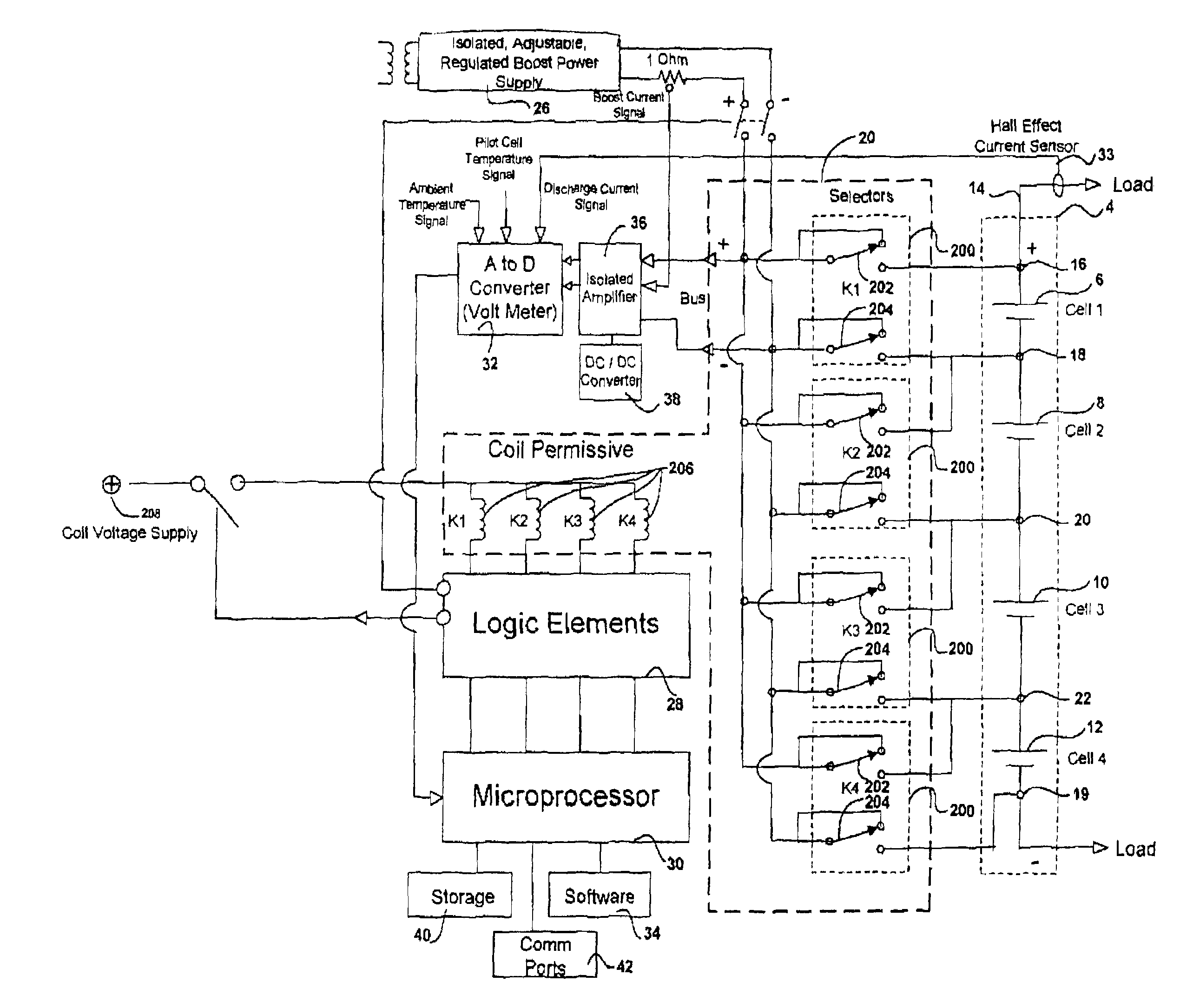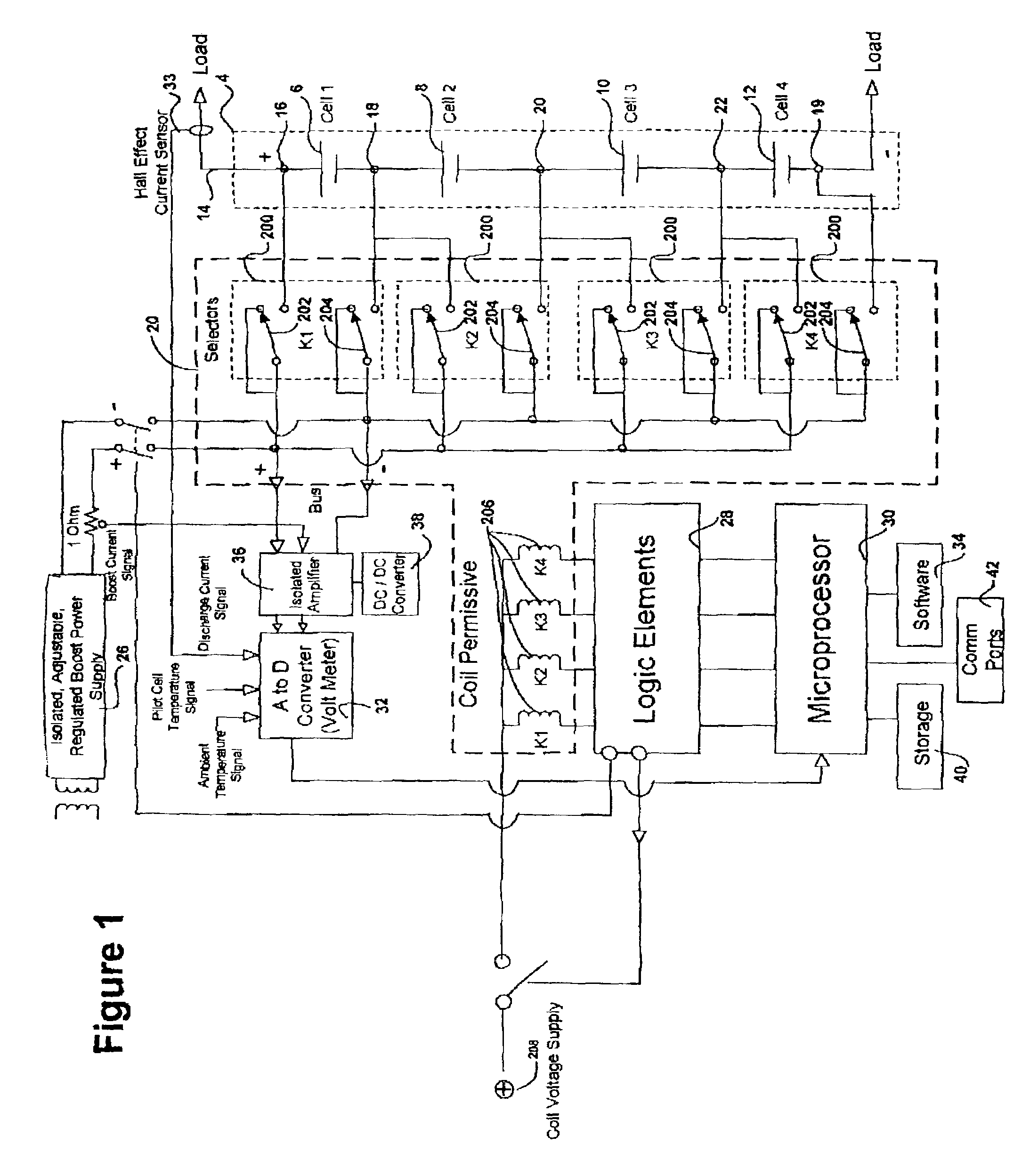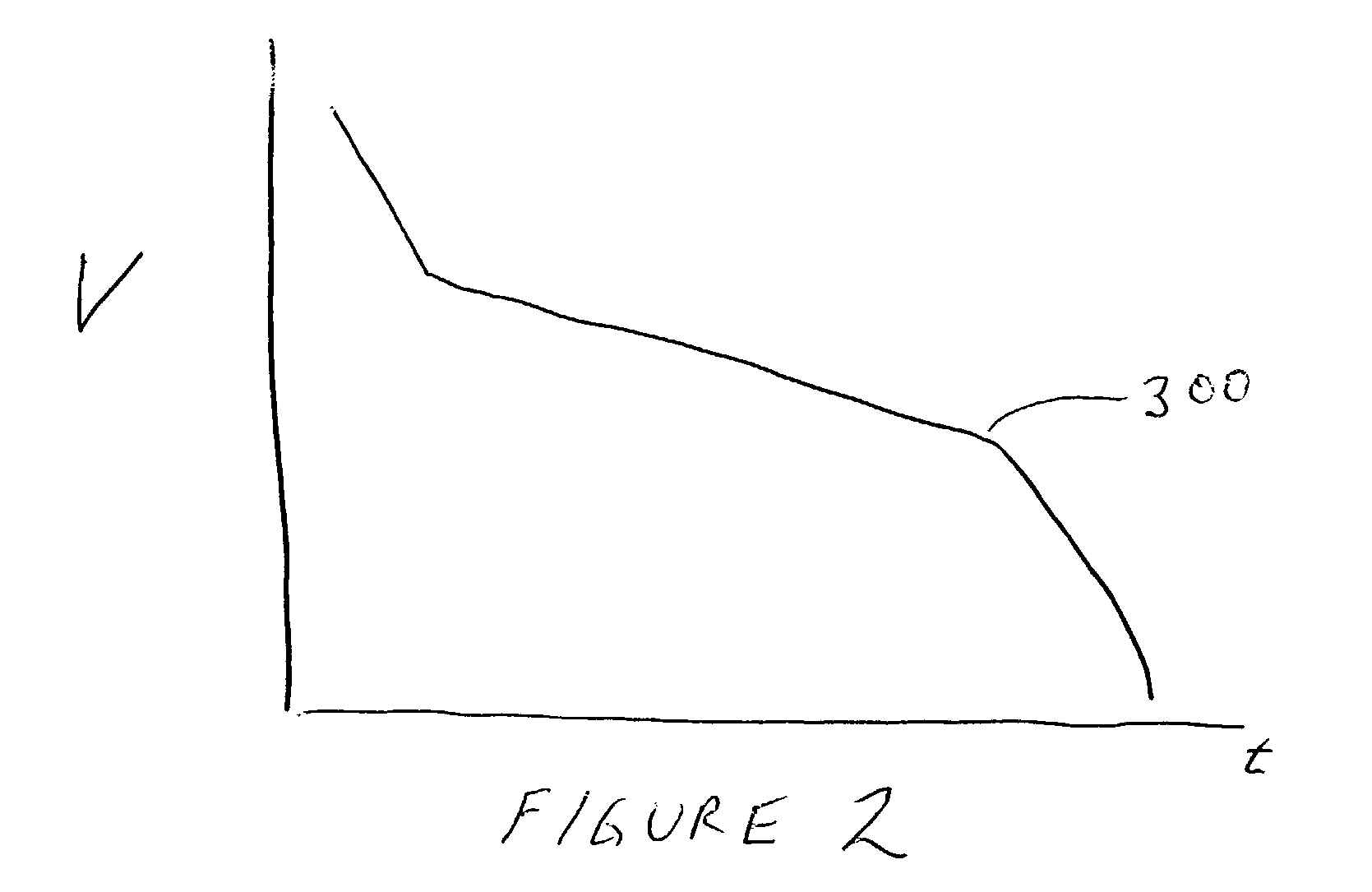Battery management system and method
a battery system and management system technology, applied in the direction of multiple simultaneous battery arrangement, amplifier modification to reduce noise influence, thermometer testing/calibration, etc., can solve the problems of over-charged cells, poor recharging characteristics, permanent damage, etc., to prolong the battery life, confirm the electrochemical stability of the battery string, and confirm the temperature stability of each unit.
- Summary
- Abstract
- Description
- Claims
- Application Information
AI Technical Summary
Benefits of technology
Problems solved by technology
Method used
Image
Examples
Embodiment Construction
[0041]The overall purpose of the system is to automatically manage each individual battery unit, one of a plurality of cells in a battery string under dynamic and static conditions. The identity of multiple individual units exhibiting a problem is visually prompted along with a detailed time dated report on the system disk and / or printer.
[0042]FIG. 1 illustrates the overall apparatus for managing a battery according to the present invention. The system is used in conjunction with an “external” or “main” charger that is used for bulk charging of the battery and is not shown. Likewise, the load is not shown. As shown therein, a battery string 4 has a plurality of cells 6, 8, 10,12 (only four are shown, for illustrative clarity) connected electrically in series with one another by cell connectors or terminals 18 (between cells 6 and 8), 20 (between cells 8 and 10) and 22 (between cells 10 and 12). A first one of the series of cells has a terminal 16 , and a last one of the series of ce...
PUM
 Login to View More
Login to View More Abstract
Description
Claims
Application Information
 Login to View More
Login to View More - R&D
- Intellectual Property
- Life Sciences
- Materials
- Tech Scout
- Unparalleled Data Quality
- Higher Quality Content
- 60% Fewer Hallucinations
Browse by: Latest US Patents, China's latest patents, Technical Efficacy Thesaurus, Application Domain, Technology Topic, Popular Technical Reports.
© 2025 PatSnap. All rights reserved.Legal|Privacy policy|Modern Slavery Act Transparency Statement|Sitemap|About US| Contact US: help@patsnap.com



